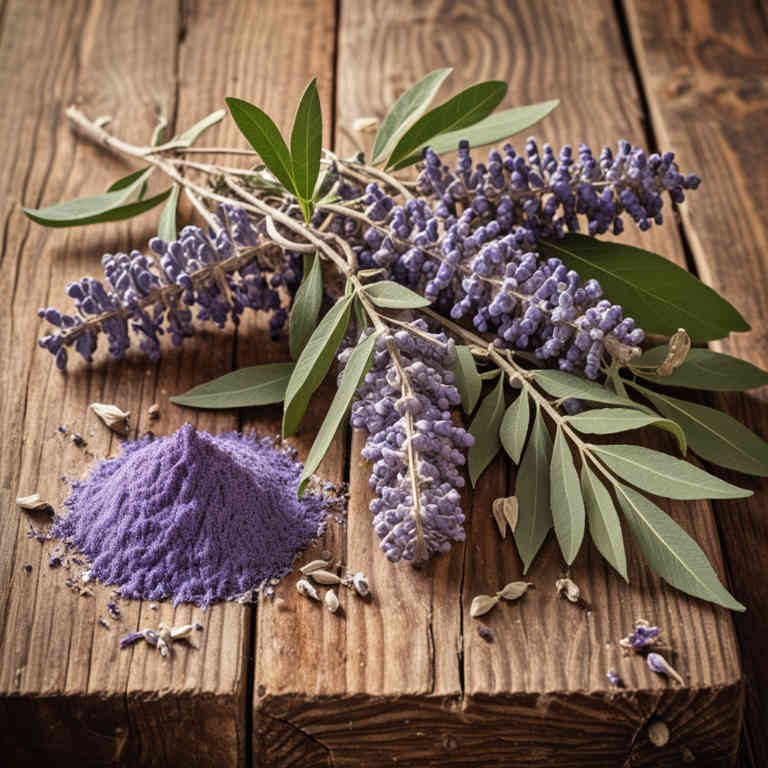Vitex agnus-castus mucillage for medicinal use

Vitex agnus-castus mucillage is a viscous, sticky substance derived from the plant Vitex agnus-castus, commonly known as chasteberry.
This preparation is obtained by extracting the mucilage from the plant's fruit or leaves through a process involving water or other solvents. In herbalism, it is used to support hormonal balance, particularly in women, and is often employed to address menstrual irregularities and symptoms of premenstrual syndrome. It is also believed to have calming properties that may help with anxiety and stress.
Due to its soothing nature, it is sometimes used in topical applications for skin conditions or as a base for other herbal formulations.
Uses
Vitex agnus-castus mucillage has been used to support hormonal balance, particularly in women, for centuries.
Historically, it was valued in ancient Greece and Rome for its purported ability to regulate menstrual cycles and ease symptoms of premenstrual syndrome. Traditional herbal medicine, including Greek, Egyptian, and European practices, utilized the mucilage from the chaste tree for its purported calming and reproductive health benefits. In modern times, it is commonly used as a natural remedy for hormonal imbalances, mood regulation, and as a complementary therapy for conditions like polycystic ovary syndrome.
Scientific research continues to explore its potential mechanisms and efficacy in contemporary herbal medicine.
Benefits
Vitex agnus-castus mucillage has health benefits such as supporting hormonal balance, particularly in women, by regulating menstrual cycles and alleviating symptoms of premenstrual syndrome (PMS).
It is also known to enhance fertility by promoting ovulation and improving the quality of cervical mucus. The mucilage in this preparation has soothing properties that can help reduce inflammation and support digestive health. Additionally, it may contribute to stress relief and improve mood by influencing the hypothalamic-pituitary-adrenal (HPA) axis.
This herbal preparation is often used in traditional medicine for its potential to support reproductive and hormonal health.
Constituents
Vitex agnus-castus mucillage active constituents include iridoids, flavonoids, triterpenes, and essential oils.
These compounds are believed to support hormonal balance, particularly in women, by influencing the hypothalamic-pituitary-ovarian axis. The mucilage may also have mild anti-inflammatory and soothing properties. It is commonly used in herbal medicine for menstrual regulation and menopausal symptoms.
However, its specific mechanisms and efficacy require further scientific research to fully understand its health benefits.
Preparation
To make Vitex agnus-castus mucillage, start by selecting high-quality dried Vitex agnus-castus berries.
Place the berries in a glass jar and cover them completely with a high-proof alcohol, such as vodka or grain alcohol. Allow the mixture to steep for 4 to 6 weeks in a cool, dark place, shaking the jar occasionally. After the steeping period, strain the liquid through a fine mesh strainer or cheesecloth to separate the mucilage from the plant material.
The resulting mucilage can then be used as a topical or internal preparation, depending on the intended use and professional guidance.
Side Effects
Vitex agnus-castus mucillage may lead to hormonal imbalances, particularly in women, due to its phytoestrogenic properties.
It can cause irregular menstrual cycles, breast tenderness, and mood swings. Some individuals may experience gastrointestinal discomfort such as nausea or diarrhea. Prolonged use might interfere with thyroid function, leading to hypothyroidism.
It is important to consult a healthcare professional before using this preparation, especially for those with pre-existing medical conditions or on medication.